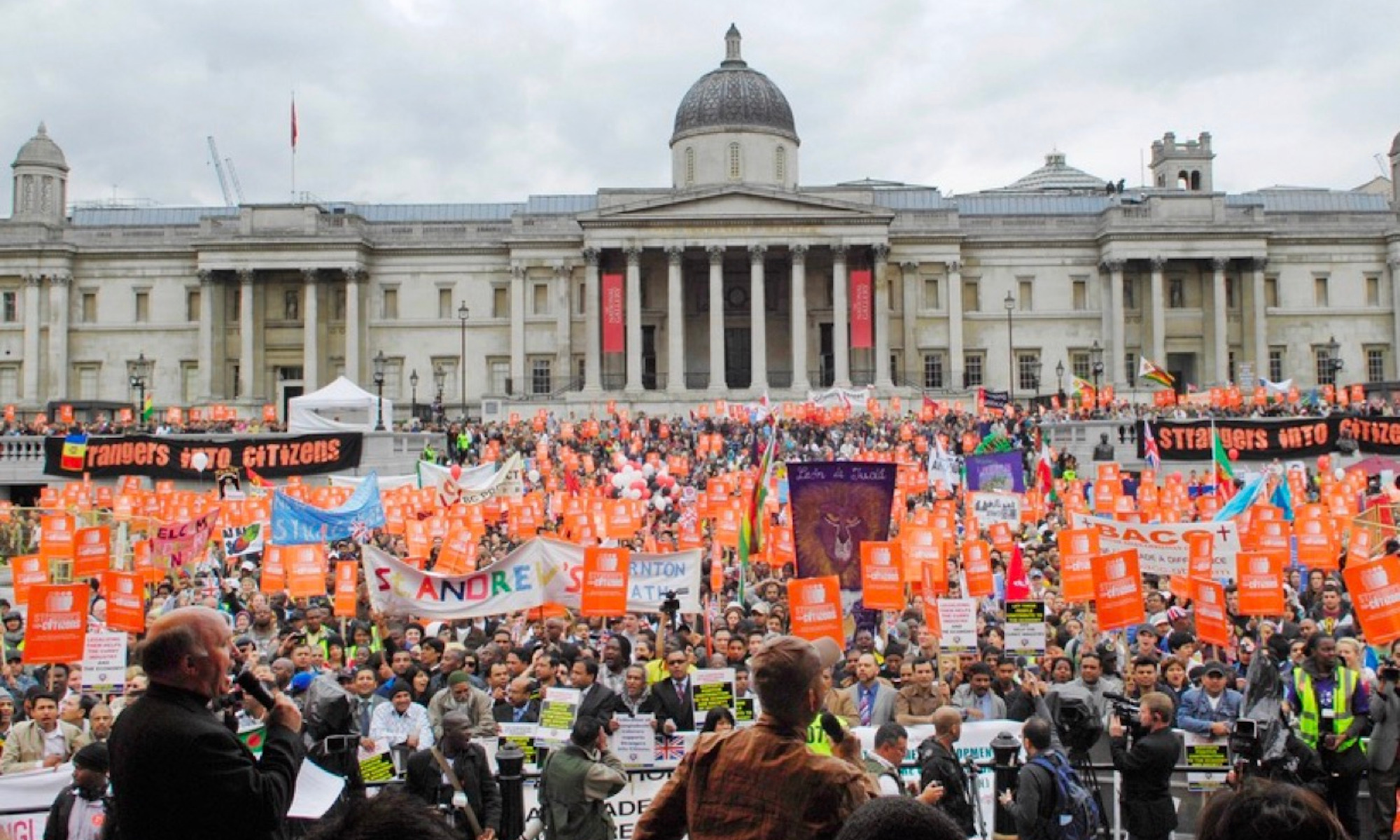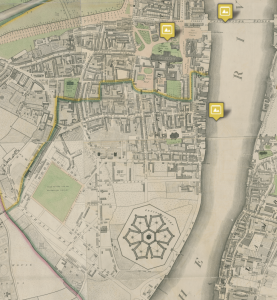
I looked at John B. Papworth’s Select Views of London, published in 1816. There are only three plates related to my area. One is a view of St. John’s Church from the river. Another displays Westminster Abbey. The third shows St. Stephen’s Chapel and the Speaker’s House from Westminster Bridge. Thus, the guidebook highlights the religious and political focal points of the region, but leaves the rest unmarked. I found this lack of notation intriguing. It further underscores this juxtaposition I have previously described between the high and low ends of society. Moreover, Papworth’s choice to leave the rest of this area untouched suggests that he sees it as unremarkable. The full title of the book is Select Views of London; with Historical and Descriptive Sketches of Some of the Most Interesting of its Public Buildings. Thus, each plate (and the absence of a plate) is laden with intentional decisions. What determines an “interesting” building? Interesting to whom, and why? The large panopticon certainly drew my eye to the area as I viewed it from 2021, but that was not a public building Papworth wanted to bring attention to. Nor was the school and surrounding playground. This reminds me of another theme of Oliver Twist, which is the way those in power cast aside both children and prisoners as less than full human beings. Papworth sees the governmental and religious institutions in the area as valuable and notable for readers to know about and visualize, but he does not see the educational and penal institutions the same way. The continuity and contrast between how I see this area and how Papworth marketed it in 1816 is very interesting to me.
Looking at the buildings that Papworth does depict reveals a few interesting notes. First, this guidebook initially caught my eye because it presents visual representations of the landmarks, rather than textual descriptions. The maps are limited in only showing an overhead, largely black and white view of the city. Papworth’s illustrations add color, dimension, and perspective to the our view of Westminster.
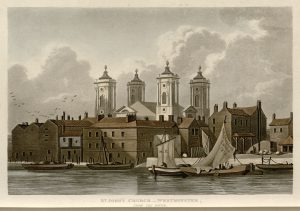
Rather than being a shaded polygon on the map, we see St. John’s Church as it would look from the Thames, and we see how its riverside location shaped the scene, with sailboats in the foreground of the image. Moreover, the sails appear to be in motion, being taken down from some of the boats, and the birds are in mid-flight. This gives dynamism to the image and puts us in the scene, bringing it to life.
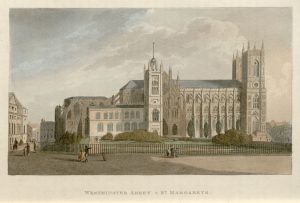
The plate displaying Westminster Abbey similarly adds to our understanding of life in London at this time, as we see people on and around the abbey grounds going about their days. We see children and families strolling along the street, and someone on horseback. In the background on the left we can make out people riding in a covered carriage. The people’s dress suggests that they are well-off which contrasts with the sense we got of the other area of Westminster around the penitentiary.
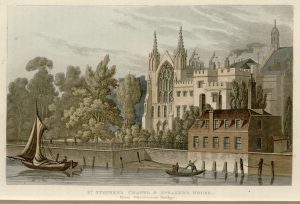
The view of St. Stephen’s Chapel and the Speaker’s House also presents a window into London life. We see people on boats on the river, adding to our sense of how the Thames is another space of interaction and motion in the city in addition to the streets and buildings. We also see the juxtaposition of the natural and the built environments again, with numerous trees in the foreground and smoke coming out of a building in the background. As the introduction to the site noted, London at this time is far ahead of other English cities in its industrialization and population growth. This image hints at the tension between the natural and the human that characterizes this era. Thus, Papworth’s guide is as interesting for what it depicts as for what it leaves untouched.
